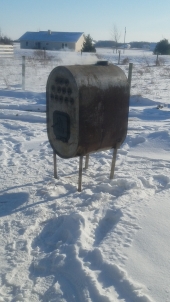
















brice Moss wrote:
one problem with smaller pipes is turbulent vs laminar flow smaller pipes flow gas less readily because of friction of the gas along the walls of the pipe also getting even flow among a tube bundle requires some pretty intense engineering
cob is the mass of choice due to being virtualy free, anything that will store and pass heat would work








HMMMM.... wrote:
I was thinking of 5 2" I.D. conduits running from one end of the bed to exit out the wall at the side or foot of the bed. This would be 10" of usable ducting and the whole bed frame base could be off the floor and the about 24" of heated mass the size of a queen sixe bed..
Would it be beneficial to put air flow fins in the base of the riser to create a vortex.

and more air mix for the burn at the top of the barrel?
















Professor of Thermal and Electrical Engineering, Welding/metallurgy: Licenses: PE license, Mechanical license Variety of other "certifications" from industry groups such as Refrigeration Service Engineers Society http://www.rses.org/, ASHRE http://www.ashrae.org/ Ect.

|
If you were a tree, what sort of tree would you be? This tiny ad is a poop beast.
Rocket Mass Heater Jamboree And Updates
https://permies.com/t/170234/Rocket-Mass-Heater-Jamboree-Updates
|


